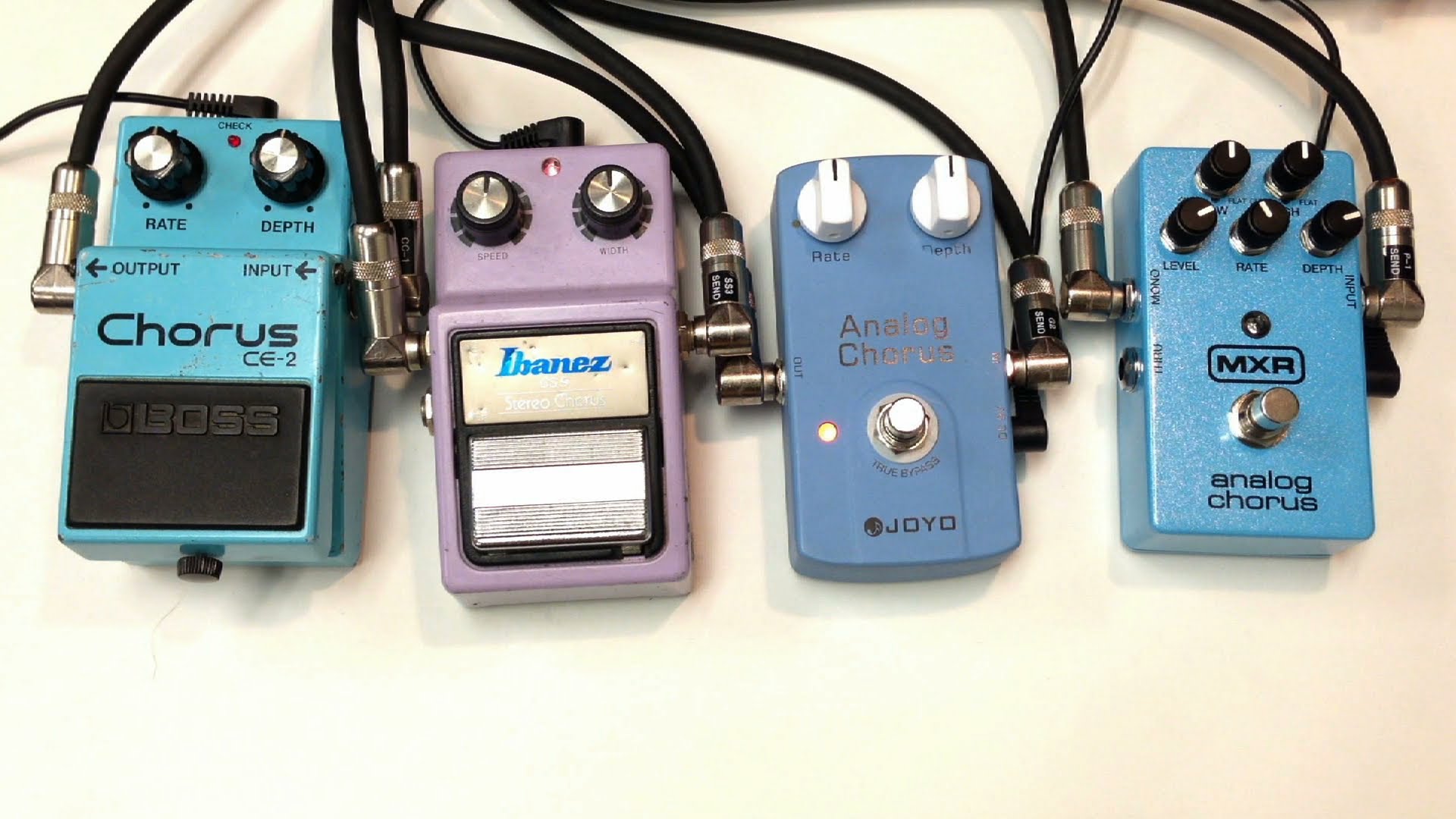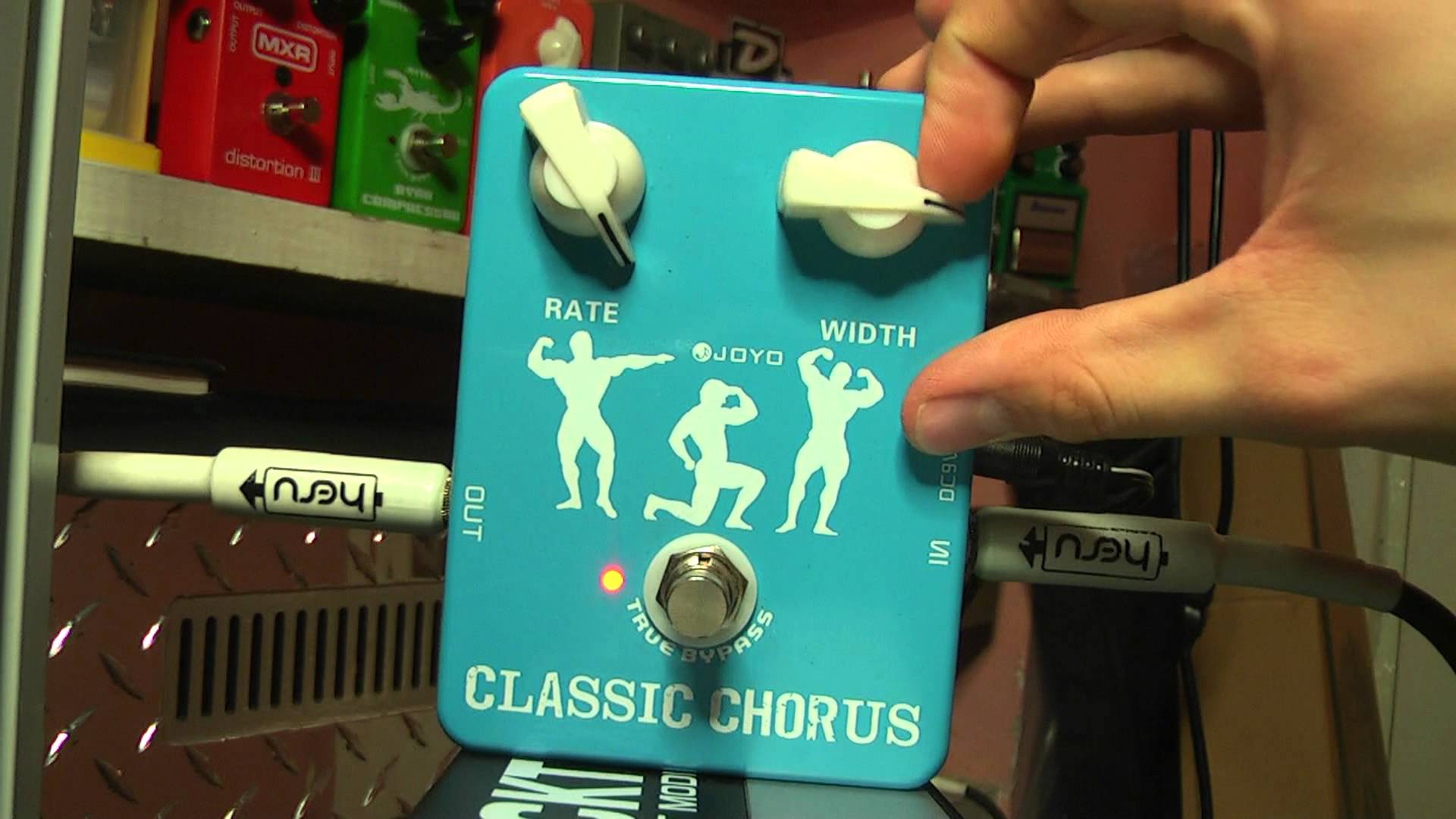A Brief History of Chorus
Guilty Pleasures: a Brief History of Chorus
Chorus. Is there a more polarizing word in the guitar pedal world? Maybe Ring Mod, but even then that’s a heavy seventy-thirty split against it. Its warm, warble-y, and often- cheesy sound has cringed and excited players alike for decades since its flagship introduction in the 1970’s.
Love it or hate it, you cannot deny the impact its had on music over the years. It basically defined the 80’s alongside gated reverbs, backcombed hair, and those horrible electronic drums that looked like someone cut the tops off some kind of Damien Hurst inspired bin set.
But what is chorus? Why do we use it? And what about it draws as many players in as it does turn them away.
Before we can decide on that, we first must learn about its origins. Where it came from and how it came to be one of the must fundamental effects in modern music.
You can argue that the earliest form of chorus came through in the 1930’s with the Hammond organ. Hammond organs have wheels and pull knobs that can add or remove extensions to the chords being played (3rds, 4ths, 6ths, etc.). They also had the ability to detune the notes being played to give you a fuller, more frequency dominating sound, i.e. chorus! But it wasn’t until the 1970’s that chorus started showing up on the guitarist’s radar.
Roland released two amplifiers in 1975, the JC-60, and the JC-120. More commonly known these days as the Roland Jazz chorus amps, which have a huge cult following amongst the alt guitar players of this world. But originally they were marketed as keyboard amps, providing built in chorus that could relieve the weight of having that tech built into your actual keyboard alongside a shimmering clean signal, seems strange to think about that now doesn’t it!

Guilty Pleasures a Brief History of Chorus
Anyway it wasn’t long before Roland noticed the influx of guitar players who were using the JC amps and decided to bring some of that tech into the pedal world. Bring on the Boss CE-1, a clunky, heavy, steel box that provided the exact same chorus sound found in the JC-120. Sales were slow initially, due to its high retail price, but saw rapid growth once guitarists saw the potential of its stereo out function. Which allowed guitar players to run two amps at the same time creating previously unheard atmospheric sounds.
With Roland focusing their Boss division on the pursuit of more compact pedals, it wasn’t long before the CE-1 saw its successor. In 1977, Boss released the CE-2, arguably THE most famous chorus pedal in the world. The CE-2 had all the same functionality, minus the stereo outs, and the vibrato, and was used on countless records and guitar and keyboard sounds for the following decade and a half.
History of Chorus Pedals
Since its hay day, decade dominating stint in the 80’s, chorus has taken more of a backseat role in the effect world, finding purpose in more subtle pop applications on synths, or helping Metal and Alternative bands give their riffs and solos more of an edge. Still, there is no denying its contribution to music. But now we know its history, what is chorus?
Put simply, chorus is a modulation effect. Meaning that it affects the pitch and frequency of your guitar tone, rather than volume, gain, delay, or space surrounding your tone. It works by doubling your signal, then taking the double of your signal and modulating the pitch up and down at a chosen rate. This gives your guitar a fuller sound because your signal is not only doubled, but is also moving in and out of tune with itself. Don’t ask me why that makes it fuller, lets just say that there’s something about playing an instrument alongside the same thing but slightly out of tune with itself that makes stuff sound bigger. Its science, make your peace with it. What’s important is the result of this effect; modulated sonic magic. Chorus allows you to get anything
from lush 80’s pop magic, to gritty 90’s Sonic Youth/Cure era Alt-Rock and Indie, all the way to straight up weird.
At this point, you’re probably saying to yourself ‘Alright Dan, you’ve convinced me. Chorus sounds awesome and I want one of my very own right now. But I don’t know where to begin because I’m a complete gear noob!’
Well fear not gear noobs, once again I’ve compiled y’all a list of my three picks that will cater to any guitar players needs. Pro or no, steep or cheap, there’s a chorus pedal in here for you. So lets just all shut up so I can get on with this yeah?
Dan’s pick – Tone City Angel Wing (£40)
It’s actually such a shock for me that it’s taken me this long to mention a pedal by Tone City in these articles. They have an incredibly extensive range of really solid sounding pedals, most of them are super pedal-board friendly, and above all else, they’re like forty quid!
What?! That’s right, forty pounds for a great sounding chorus pedal. Your entry into lush 80’s sounding guitar magic could cost you as little as forty pounds if you so choose. It comes with a super simple three knob configuration; level, rate, and depth, and provides lush chorus sounds. Is it the best chorus I’ve ever heard? No. But it’s bloody good for forty pounds. If you’re on the fence about whether you think chorus is awesome or cheesy, and need to own one to make a final decision on that. Then the Tone City Angel Wing is for you.
Dan’s Pick – Boss Super Chorus CH-1 (£71)
It was unlikely that we were going to do a list of best choruses without having Boss pedal in there was it? So lets talk about the CH-1.
Not as well known as its predecessor the CE-2, the CH-1 first came on the scene in the 1989 as the successor to the CE series, adding EQ controls, stereo outputs, and a less criticized knob layout. Sadly, this pedal has been stood in the shadow cast by the CE-2 pretty much since its birth, despite
being used on countless records. Well guess what? Original CE-2s cost about two hundred-plus pounds; the Waza Craft CE-2s cost about two hundred-ish pounds, what does the standard CH-1 cost? £71. So you do the math.
People always say that the CE-2 is the sound of the 80’s, and in fairness it was used all the time during that decade. But for me personally I’ve never used a CE-2 and gotten that classic cheesy 80’s chorus sound that I’m looking, or managed to get that 90’s Cure/Sonic Youth chorus sound that I love either. Whereas the CH-1, it comes with ease. It’s simple, sounds awesome, and costs half the price of the coveted CE-2. Even the original analogue circuit CH-1’s cost less than any of the CE-2s. If you’re wanting classic boss chorus, classic 80’s chorus, or even just a good chorus for a decent amount of money. The Boss CH-1 is THE chorus pedal. Don’t believe the hype; believe me, a random guy on the Internet.
Dan’s Pick – Walrus Audio Julia (£179)
Thought it was wise to pick a chorus that wasn’t the CE-2 for my big money pedal, seeing as I just spent two hundred words convincing you to not believe the hype surrounding it. To clear things up, the CE-2 is a fantastic chorus, it’s got a great sound, but it’s also spoken about all the time and there are millions of articles praising it so why add to that? What I’ve chosen for you is the Walrus Audio Julia, which falls in the boutique pedal category in so many ways, all of them awesome.
I don’t know about anyone else, but when people say modern chorus sound I used to think of cheesier, more 80’s sounding chorus, until now. The Julia is what all modern choruses should be aiming to sound like. It provides warm, organic sounding choruses, lush vibratos, and anywhere in between with its unique knob layout and functionality. It kind of makes me think of what kind of soundscapes fish would hear underwater, which is fitting because its name derives from mysterious sounds heard at the depths of the ocean. Will it give you an accurate chorus sound for the
Purple Rain tone? I don’t know, probably not if I’m being honest. But then why should it. Boss pretty much have a monopoly on the classic 80’s chorus sound with their endless array of chorus models, and they were there first so why compete? What the Julia can do is broaden your sonic horizons and make you re-evaluate what chorus is, and what kind of tones you can get out of it. If you’re looking to invest big money into a chorus that is unlike its stereotypical predecessors, the Julia is everything you’ve been looking for and more.
By
Dan Tredgold

